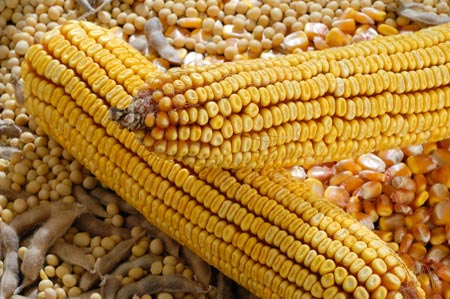 (Agriculture.com) – Grains and soybeans were little changed in overnight trading as investors weigh reduced demand and burdensome global stockpiles against rising Chinese ethanol imports and dry weather in South Africa.
(Agriculture.com) – Grains and soybeans were little changed in overnight trading as investors weigh reduced demand and burdensome global stockpiles against rising Chinese ethanol imports and dry weather in South Africa.
Chinese importers canceled orders for 395,000 metric tons of soybeans, the U.S. Department of Agriculture said in a report yesterday. Meanwhile, demand for grains and oilseeds from the U.S. has slipped this year thanks to large global supplies and a strong dollar.
Exporters have shipped 10.6 million metric tons of corn since the start of the marketing year on Sept. 1, down 23% from the same timeframe a year earlier, according to the U.S. Department of Agriculture. Soybeans shipments have declined 9% in the same period, while wheat exports since the start of the marketing year on June 1 are down 14% from the prior year.
The USDA is expected to release its export sales report updating those numbers today. The report, normally released on Thursdays, was delayed due to the snow storm last weekend.
On the plus-side for prices, Chinese ethanol imports shot up last week, while the worst drought since 1904 in South Africa has curbed production of grains, meaning the country, normally a supplier of corn to its neighbors, will have to import this year.
Wheat futures for March delivery fell 1 cent to $4.71 ¼ a bushel overnight on the Chicago Board of Trade. Kansas City futures declined 1 ½ cents to $4.63 1/4 a bushel.
Corn futures for March delivery fell ¼ cent to $3.65 ¼ a bushel in Chicago.
Soybeans for March delivery were down ¼ cent to $8.67 ½ a bushel. Soymeal added 20 cents to $267.10 per short ton, and soyoil futures declined 0.10 cent to 30.59 cents a pound.
**
Snow-Delayed Export Sales Report Expected to be Lackluster
The U.S. Department of Agriculture will release its weekly export sales report for the week that ended on Jan. 14 at 8:30 a.m. in Washington, a day late after a blizzard last week shut down the entire city (save for a few female senators who actually made it to work while the men stayed at home).
Demand hasn’t been exactly stellar as of late, with corn, beans and wheat sales in their respective marketing years all trailing year-ago figures. It’s likely the USDA will eventually have to lower its outlook for sales as buyers are reluctant to purchase supplies from the U.S.
Having abundant – some might say burdensome – global supplies and a weak dollar isn’t making us any friends. Inventories corn, soybeans and wheat are all forecast by the USDA to be records this year.
Unfortunately, this week’s export sales report isn’t expected to blow off the barn doors.
Corn sales this week are expected to be between 800,000 and 1 million metric tons, less than the 1.16 million tons they sold the prior week. Soybean sales are projected at 500,000 to 800,000 tons, down from 985,100 tons a week earlier.
Wheat sales are forecast from 200,000 to 400,000, versus 362,000 tons that were sold a week earlier, according to the USDA.
Discuss the export sales report in Marketing Talk.
**
Weather Systems Bringing Snow to Several Parts of U.S.
Weather systems on the West Coast will bring precipitation to parts of California and the Pacific Northwest this weekend, according to the National Weather Service.
Snowfall is also expected in the Rocky Mountains and Great Lakes regions.
A storm moving up from New Mexico is expected to bring with it “significant snowfall” across western Kansas starting Monday. The NWS pushed back the arrival of the storm, but also increased its projection for how much snow will fall. The agency now says as much a 6 inches could hit the area.
While that likely will make travel dangerous, it’s good news for winter wheat that’s in the ground right now as it adds another protective layer while providing moisture when it melts in the spring.
International weather looks unchanged from a production standpoint.
Areas of Argentina that probably could use a break from the rain may see more precipitation in the next six to 10 days, according to MDA Information Services.
In Brazil, where the harvest is underway, rain will slow fieldwork, but improve soil moisture in areas where growth is still ongoing, the forecaster said.




